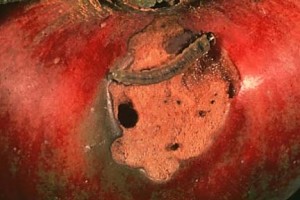

Looks like the temperatures will climb into the upper 80’s by mid-week. Optimum timing of insecticide applications should be made at the most opportune window for coverage. If temperature exceed 75F the pyrethroid group are less likely to be as effective. The spinosad products are more stable with higher temperature.

* 1-2 applications should be made against this summer generation at first hatch
We recommend using three distinct yet very effective active ingredient groups or IRAC classes. In this way we hope to reduce the resistance potential of the insect over time. If you used one class during the pre-bloom period, bloom or Petal Fall, we would strongly recommend a completely different class now against the onset of the second generation. USE THE SAME CLASS FOR EACH GENERATION when possible. So, for example, if you plan to use Delegate for the first application of the summer generation, use two applications of Delegate at a 14d interval (applied against this summer generation).
The classes used against the leafrollers include:
• The Bt products such as Biobit, Dipel, Javelin, and MVP (IRAC 11 B2) also have a low impact on beneficial mite and are very effective against OBLR.
• Intrepid (methoxyfen-ozide) (IRAC 18A) another reduced risk insecticide very effective against the larva, imitates the natural insect molting hormone and works by initiating the molting process. Intrepid is quite safe to birds, fish, and most beneficial insects.
• Proclaim (emamectin benzoate) (IRAC 6), a second-generation avermectin insecticide related to Agri-Mek, is also an excellent insecticide against the OBLR while having a low impact on beneficial mites.
• Altacor (chlorantraniliprole) or Belt (flubendiamide) (IRAC Class 28)
• Delegate (spinetoram) and Entrust (spinosad) (IRAC Class 5), have been used successfully against the surface feeding and internal Lep. complex.
The placement for these materials has been predominately at the onset of hatch of the summer generation larva of OBLR, providing excellent results in NY State.

